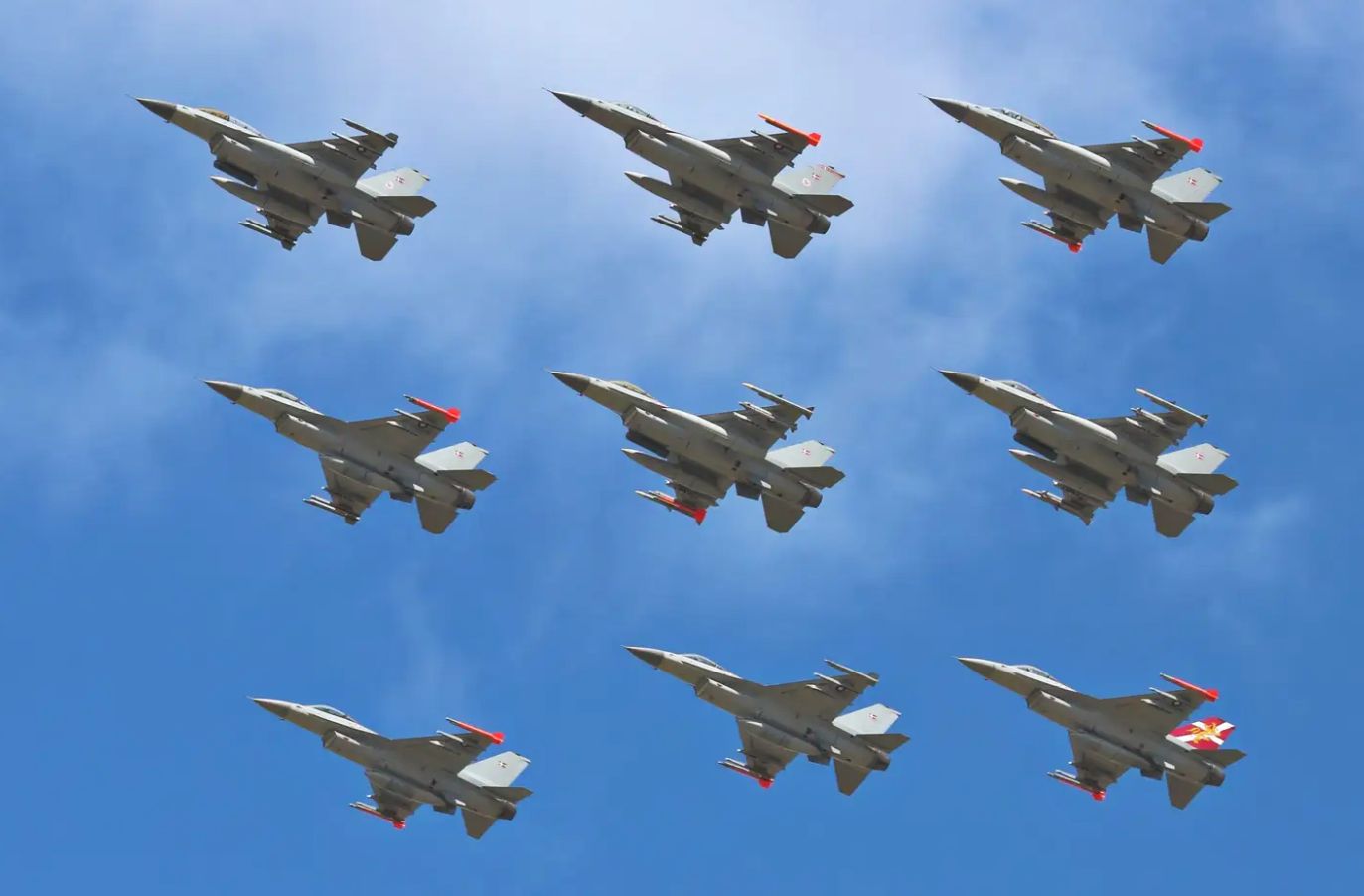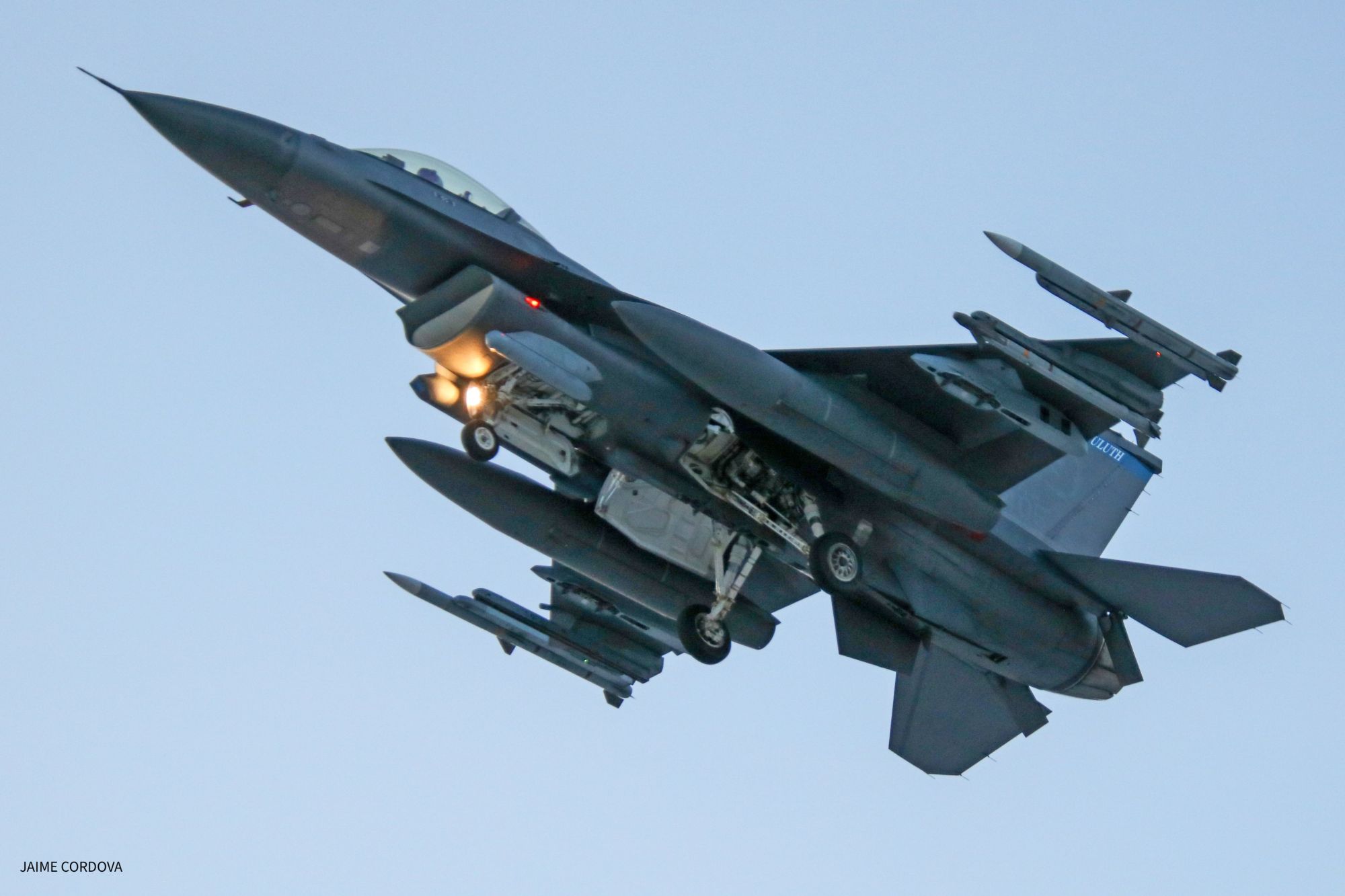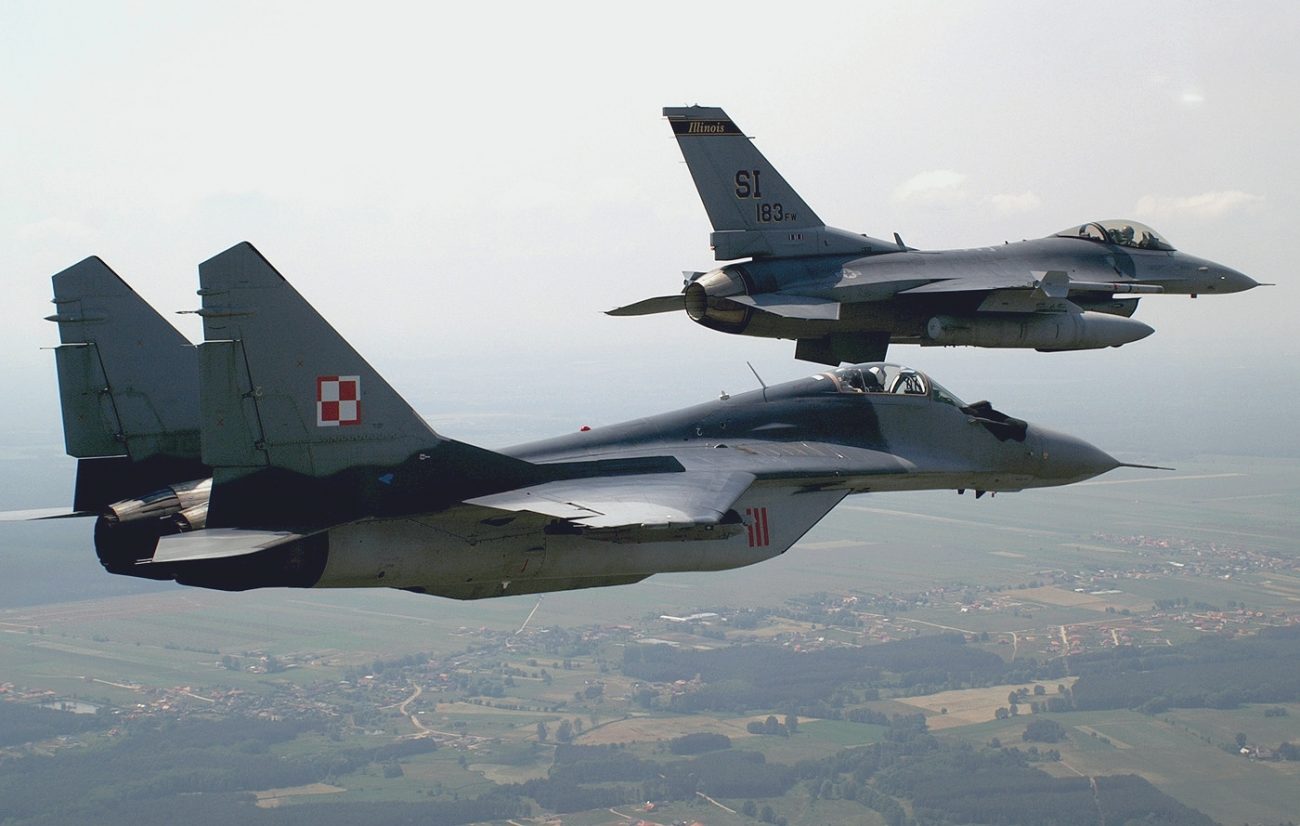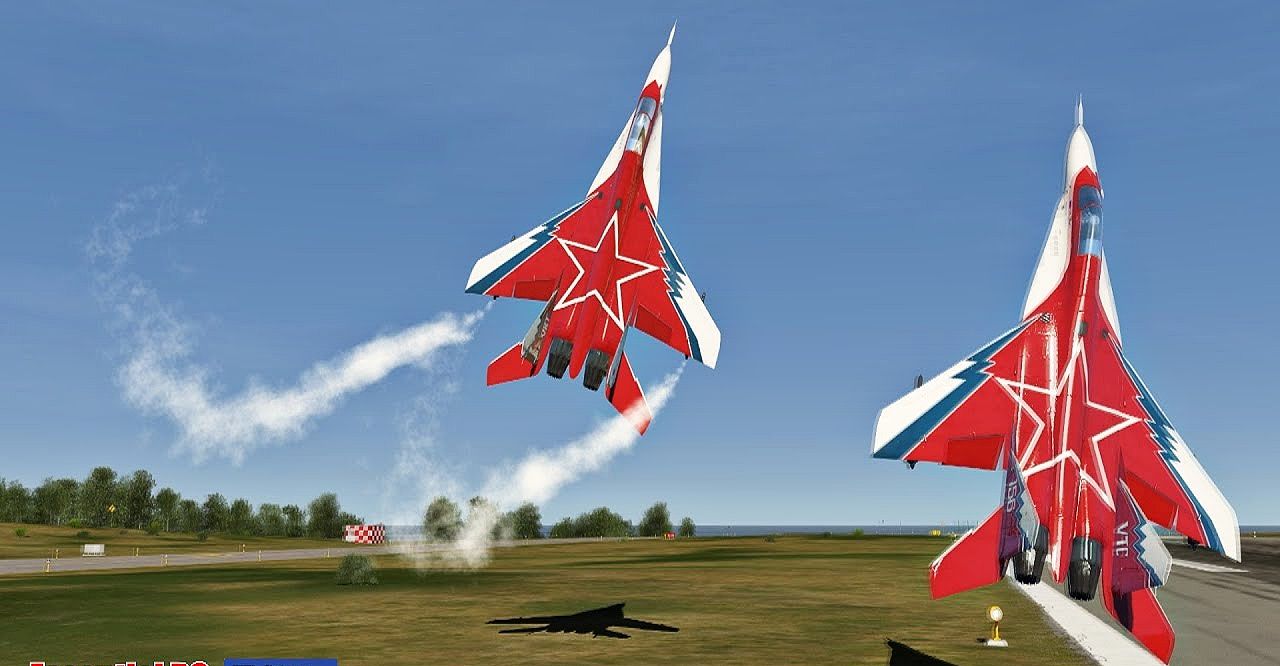By Air Marshall Anil Chopra
President Zelenskyy of Ukraine had been seeking fighter aircraft from NATO supporters for quite some time. US President Biden had restricted such supplies due to fear of a strong Russian reaction and escalation. The demand grew stronger as Ukraine prepared for a major counter-offensive.
Plucky Ukraine ‘Retaliates’ After Unforgiving Russian Strikes With Kh-101 & Iskander-K Missiles; Remains Poised For Counteroffensive
Finally, by late March 2023, it was decided to allow the sale of second-hand Mikoyan MiG-29 fighter jets from Slovakia and Poland. The clear advantage is that they are already in the Ukrainian Air Force inventory and have the ground infrastructure, technical know-how, spares, and trained crew.
The aircraft is an F-16 contemporary and of similar class.
During the G7 summit in Hiroshima, Japan, US National Security Adviser Jake Sullivan said President Biden had decided to allow its Western allies to supply Ukraine with advanced fighter jets, including American-made F-16s. Britain and the Netherlands had said they were building an “international coalition” to help Ukraine procure F-16s.
It was touted as a game-changer decision. However, many analysts, including Americans, have questioned the move. There is thus a need to discuss the pros and cons and put this prospective sale in context.
MiG-29 Aircraft Quick Availability
The Mikoyan MiG-29 is a twin-engine air superiority fighter that entered service with the Soviet Air Forces in 1983. Along with the larger Sukhoi Su-27, it was developed to counter US fighters such as the F-16 Fighting Falcon and the F-15 Eagle.
Initially designed with conventional controls and state-of-the-art aerial missiles for air engagements, the subsequent variants were upgraded with fly-by-wire controls, the latest avionics, and multirole capabilities. The aircraft has seven external stores’ hard points. The most advanced variant today is the MiG-35.
Nearly 30 countries have operated MiG-29 variants. Indian Air Force (IAF) and Indian Navy (IN) operate these jets in significant numbers. Over 1,600 of these jets have been manufactured.
The Ukrainian MiG-29s were put to limited use against Russia during the Crimea operation in 2014. In 2018, Ukraine began domestically upgrading the MiG-29 to have multirole capability, known as the MiG-29MU2. The first upgraded MiG-29 was delivered to the Ukrainian Air Force in July 2020.
Since the 2022 Russian invasion of Ukraine, Su-27s and MiG-29s have been used as air superiority fighters, with ten MiG-29s reported lost in the early stages of the war. In August 2022, there were reports that the Ukrainians had integrated the AGM-88 HARM missile with their aircraft.

Estimates are that Ukraine today has around 15-20 MiG 29s and 20 Su-27s. The nearly 33 MiG-29s from Slovakia and Poland will bolster the front-line strength, these are in different states of preparation, but the basics remain the same.
The Slovaks received the new F-16s, and the MiG-29s were spareable. Slovakian aircraft have NATO-compatible radios and navigation equipment, as is the case with Ukrainian MiG-29MU1s, and it will be possible to use them quickly and operationally.
Similarly, the 20 Polish MiG-29s have arrived. Warsaw is replacing them with F-16s and F-35s. Polish aircraft have been significantly upgraded with modern transponders, GPS and radar-warning receivers; NATO-style radios; new avionics and cockpit displays, and the MIL-STD 1553 digital data bus.
The F-16 Fighting Falcon On Possible Offer
The Lockheed Martin F-16 Fighting Falcon is an American single-engine multi-role fighter. Like the MiG-29, it was initially designed as an air superiority day fighter and later evolved into an all-weather multirole aircraft.
It was the first aircraft to use a relaxed static stability/fly-by-wire flight control system that gave it high agility. The F-16 has 11 external store hard points.
Over 4,600 aircraft have been built since production began in 1976, and it serves in the air forces of 25 nations. Almost 2,200 F-16s are still active worldwide, making it the single most famous combat aircraft across the planet, making up 15 percent of the world’s fighter fleet.
F-16s are the only modern Western aircraft that can be transferred now. The F-16 or other fighters armed with AGM-88 high-speed anti-radiation missiles (HARM) could be used to knock out the Russian radar systems.
Ukraine had said it needs about 200 F-16s. Countries can only resell or re-export American military hardware if the US approves it. Exact numbers, by who, and timelines for transferring F-16s are unclear. The coalition plans to train roughly 20 Ukrainian pilots initially.

The F-16 is in use in many European and Middle East nations. The process of their replacement with F-35 is already on. The aircraft are thus spareable. No government has so far confirmed it will send them to Kyiv.
Irrespective of the timing and numbers, the F-16 could be part of the long-term NATO commitment to Ukraine’s self-defense.
Usually, the training of aircrew and technicians takes 10-12 months for combat exploitation. F-16s are easy to learn to fly, but employing them effectively in “a dynamic threat environment” could take years. All-weather ground-attack using infrared systems and laser-guided bombs would take longer.
Even after undergoing up to 133 days of technical training, the USAF technicians require a year of on-the-job experience to become fully qualified. The same can be abridged under particular conditions. The training can begin even before the supply deal is through.
In addition to training pilots and ground crew, the latest weapons, spares, ground planning facilities, intelligence, and supporting infrastructure will be required. This would be an expensive long-term exercise. Advanced western armaments for the F-16s would be costly.
A single Advanced Medium Range Air-to-Air Missile (AMRAAM) costs about US$1.2 million. “F-16s do best on long, smooth runways. They could face difficulties on the rougher, former Soviet ones dispersed across Ukraine,” says RAND Corp. analysts John Hoehn.
Combat air power heavily depends on modern technology, and some F-16s offered could be vintage. West will be very reluctant to risk giving high-end variants, which would be much more expensive and could get exposed to Russian Electronic Intelligence (ELINT) and electronic warfare.
The aircraft can’t risk going head-to-head against the Russian military’s more modern systems, like its air superiority fighters and the formidable S-400 air defense system, without weakening them first.
MiG 29 Vs. F-16
The two aircraft were contemporary and performed similarly in most cases in the initial years. Both aircraft have impressive thrust-to-weight ratios. Despite the absence of fly-by-wire controls, the MiG-29 was agile and could maneuver very well.
Because of its mighty engines, it could sustain high rates of turns for a longer duration. The most impressive aspect of Fulcrum’s performance is its low-speed maneuverability combined with its helmet-mounted sight system, and slew-able aerial missiles, Western pilots believe.
MiG-29 scores high on energy maneuverability and capability to gain in a slow-speed close fight, say German pilots who have done combat training operating one against the other.
While the F-16 has an advantage above 200 knots speed, the MiG-29 has incredible nose-pointing capability down to 100 knots. Some term the MiG-29’s turn performance as so “splendid” that it can turn and fight in the phone booth.

F-16 scored very high on external visibility. F-16 is also smaller, and the MiG-29 engine leaves behind the engine exhaust smoke trail.
Both these are advantages of F-16 in close combat. The F-16 is much better at presenting the air situational picture to the aircrew. MiG-29 is a fuel guzzler and has lesser endurance. Of course, the future is less in dog-fights and more in “see-first, shoot-first, kill-first.” Radar and missile integration matters. Both sides have strength in this.
For a long time, Russian aerial weapons were considered better. However, after the dissolution of the Soviet Union, some of the factories went to erstwhile Soviet Republics. Also, a shortage of funds slowed development. While newer variants of MiG-29 kept evolving, the F-16 variants did score an edge with Block 70 and beyond.
One Ukrainian MiG-29 pilot, Maj. Vadym Voroshylov has said that “Right now (with MiG-29), we can only hold the enemy,” “But with F-16s, we could control the air as well as the seas—and the ground, to protect infantry.” The views may be slightly exaggerated because of the urgent desire to get those aircraft.
Russian Response Options
Till now, NATO’s approach was to supply defensive weapons with clear directions not to target the Russian mainland. Could that change with F-16 supplies? Some NATO members have expressed worries that handing jets to Ukraine would be viewed as escalating the war, risking a confrontation with Russia.
Why poke the bear in the eye? Russia had said that countries would run “enormous risks” if they supplied F-16s to Ukraine, implying escalation scenarios. Russia has already achieved air denial by grounding most Ukrainian fighters.
Russia will indeed attack the proposed F-16 airbase and its technical infrastructure. Russia is already positioning Tactical Nuclear Weapons (TNW) in Belarus as part of geo-political signaling. The F-16 transfer has to factor in all this.
My Take – The Way Ahead
Ukraine’s back is against the wall. They cannot win in a ground-centric war of attrition. The Russians have nearly 1,000 fourth-generation fighters.
Substantial 4th generation-plus fighters will be required to contest Russia in the air. The Russians will ultimately bleed Ukraine dry with sheer numbers. F-16s are unlikely to impact the outcome of the war.
F-16s facing off against Russia’s air defenses, including S-400, could be a “costly mistake.” You can’t just fly headlong into the teeth of the threat. The first downed F-16 will send ripples across the world.
The Russians would be looking for propaganda points. Airbases and runways will also be targets, meaning Ukraine must be serious about base defense.
Interestingly Sweden has said that sending the Saab Gripens is off the table because it could mean sacrificing its defense. Others argue that going without airpower is an even higher risk and that Ukraine requires around four squadrons of fighters to make an impact.
Upgraded MiG-29s are a more realistic platform. The advantage of giving Ukraine MiG-29s is that they already know how to fly them. More aircraft can be pooled and upgraded. It will be much cheaper and more effective.

Ten F-16s cost a billion dollars; the sustainment cost is another billion. They would eat into budgeting other equipment and capabilities urgently required to defend.
A greater number of anti-tank and anti-aircraft weapons would pay a greater dividend. Ukraine has insisted that the jets would be invaluable in air defense missions during the counter-offensive. The justification rendered appears insufficient.
Maybe Ukraine should continue to rely more on unmanned, loitering aircraft and munitions to degrade the Russian air defense network.
The MiG-29s, with Western avionics and weapons, can do the needful, while more aid remains in the form of defensive weapons. The HIMARS rockets, Javelin missiles, and promised M1 Abrams tanks, artillery, and British Storm Shadow missiles should boost capability.
West could support with drones, electronic warfare, countermeasures, and real-time targeting to enable Ukraine to make successful strikes.
I feel the offer of F-16s is currently more political signaling than physical combat support. It might make a few strikes over the next year with few successful hits, but no one aircraft can change the course of this war. F-16 is not a magic weapon. Getting the F-16s will, of course, be a morale boost for Ukrainians.
Most importantly, the F-16s could be the first significant step of the lengthy process to transform Ukraine’s Soviet-style air force into a Western one. The transition is now inevitable. Only the timing has to be worked out appropriately.
- Air Marshal Anil Chopra (Retired) is an Indian Air Force veteran fighter test pilot and is currently the Center for Air Power Studies Director-General in New Delhi. He has been decorated with gallantry and distinguished service medals while serving in the IAF for 40 years. He tweets @Chopsyturvey
- Follow EurAsian Times on Google News




